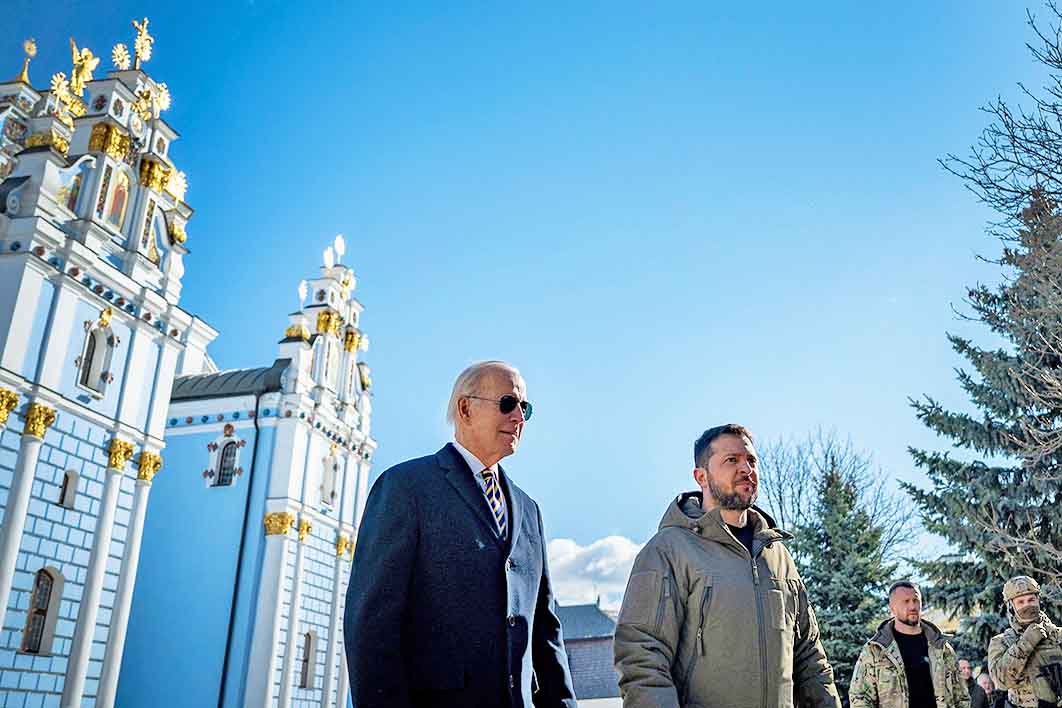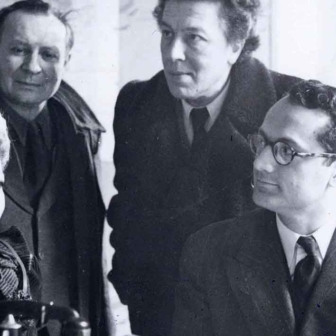A year and a half after Russia launched its all-out war against Ukraine seems like a good time to take stock, not only of where the conflict stands but also of the condition of the combatants and the likely duration of the invasion.
In Russia, what was already an increasingly autocratic regime has ramped up its repression and increasingly shrill propaganda to such an extent that some informed observers are viewing it as fascist. In Ukraine, Kyiv’s second big counteroffensive is under way, but the enemy troops have dug in and are fighting hard to hold on to the territories they managed to occupy in 2022. The counteroffensive is making progress, but it is agonisingly slow.
NATO’s decision to promise membership to Ukraine — but only once the war is over — has perversely increased Russia’s incentive to continue fighting, especially with the possibility of a Trump victory in next year’s American election. The longer Russia maintains its aggression, the longer Ukraine remains outside NATO; a Trump presidency might well herald a fracturing of support for Ukraine among its allies. And as long as Putin remains in power, and as long as his army can sustain the ongoing significant losses, Russia is likely to remain in the war.
Along the way, analysts have got many things wrong. From predicting Russia wouldn’t attack (just before it did), to assuming a quick breakdown of Ukraine’s defences and disintegration of its government, to making optimistic predictions about the instability of Putin’s regime: real developments continued to confound the futurology so prevalent in the commentary.
I mustn’t exclude myself from this critique. A month into the conflict, I published a short piece outlining possible scenarios about how this war would end. Like others, I couldn’t imagine the conflict still raging a year and a half later. Like others, I underestimated Russia’s economic resilience in the face of sanctions (although the full impact of these measures is only being felt now). “Given the sanctions regime,” I wrote, Russia will retain the capacity to resupply its troops for “months at best.” That was way off the mark.
I did better with the scenarios I offered. The first was escalation, by which I meant a tactical nuclear strike or, worse, a nuclear attack on NATO. I didn’t think that was terribly likely, but I wasn’t confident enough to rule it out altogether. Luckily, I was right. While such a course of action remains a possibility, sabre-rattling rather than action has so far prevailed.
The escalations we have seen, however, are significant. The blowing up of the Kakhovka dam caused catastrophic environmental damage and human and material losses for Ukraine. The heavy use of landmines will contaminate the country for years, and maybe decades, to come. And the continual air and artillery attacks on civilian targets are degrading Ukraine’s infrastructure and kill or maim its people in significant numbers.
But Russia’s most consequential escalation has been in the sphere of trade: its continuing attempts to shut down Ukraine’s grain exports are an open attempt to hold the world hostage with the threat of famine.
In effect, what we have seen is my second scenario playing out. “Russia,” I wrote, “will destroy as much of Ukraine’s military and civilian infrastructure as possible, broaden attacks on civilians to increase the costs of this war for the government of Ukraine, and threaten nuclear war against anybody who wants to intervene.”
The point of this brutality was to push Ukraine’s president Volodymyr Zelenskyy “to the limit of what he thinks his people can endure.” Thus far, however, neither Zelenskyy nor Ukraine’s population as a whole has cracked under the pressure. Instead, the defenders have become further embittered and many of their friends abroad increasingly convinced that support for Ukraine is essential.
On the other side of the frontline, too, Putin acted as I feared: he persisted in his war and escalated it considerably.
Back in March 2022, I saw some signs that both sides might be willing to bring the conflict to an end through negotiations. Such optimism has fully evaporated. After the liberation of Bucha in April last year and the detection of appalling war crimes committed by the occupiers, negotiations with Russia before a complete withdrawal is politically impossible. And it is now clear, anyway, that Russia was never really interested in negotiations.
With the battle of Kyiv lost by April 2022, one of Putin’s options was to annex the occupied regions in Ukraine’s east and south, and dig in his troops and declare victory in an attempt to save face at home and blame the ongoing war on Ukraine. He did the former, including in territories his troops don’t control. But he didn’t do the latter. He has clearly no intention of exiting this war.
I ended that piece last year with the least likely scenario: that “Putin’s long-suffering underlings would stage a coup against him.” No such thing happened, of course. Instead, the political elite rallied around Putin, who continued to be the final arbiter of their squabbling. The spectacularly bizarre Wagner uprising was not, as sometimes suggested, an attack on Putin and his system but rather an attempt by one player to elevate his own position, protect himself from competitors and prevent the integration of his lucrative private army into the state’s military. Its resolution reflects a paramilitarised regime in which the state’s monopoly of violence is threatened but not destroyed.
That analysts, journalists, pundits and scholars have often failed to predict the course of this war isn’t surprising. No predictive science exists to be called on, and historical analogies are a poor guide to the complexities of quickly evolving situations. We should therefore be careful not to get ahead of ourselves. Assumptions that Ukraine’s counteroffensive is already doomed, that the Wagner mutiny is a sign that Putin’s grip on power is seriously shaken, or that Russia’s disintegration is just around the corner — all these might well end up on the long list of wrong predictions this war has generated. They might also turn out to be right, of course, but making policy decisions on the basis of such shaky expectations is foolhardy.
At this stage in the conflict, too much is still up in the air. Some time is still left in this year’s fighting season. The extent to which Ukraine’s armed forces have managed to seriously degrade Russia’s military capability at the frontline might not yet be evident. New weapons are still arriving, bolstering Ukraine’s fighting potential. What’s going on inside the Kremlin is opaque, with outside observers having difficulty discerning whether a serious crisis of power is brewing.
Rather than dreaming of some magical diplomatic solution, a sudden victory by Ukraine or a sudden disintegration of Russia to bring this war to a quick end, supporters of Ukraine’s democracy should prepare themselves for long-term, costly support while carefully and probably secretly planning for all contingencies. •




